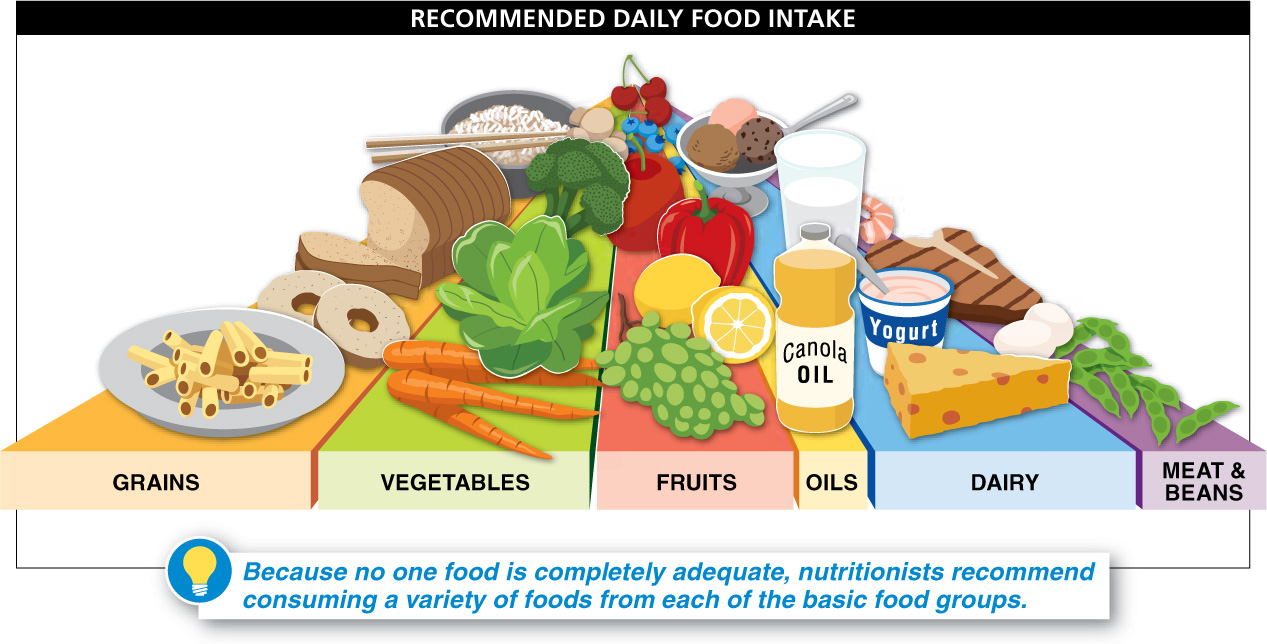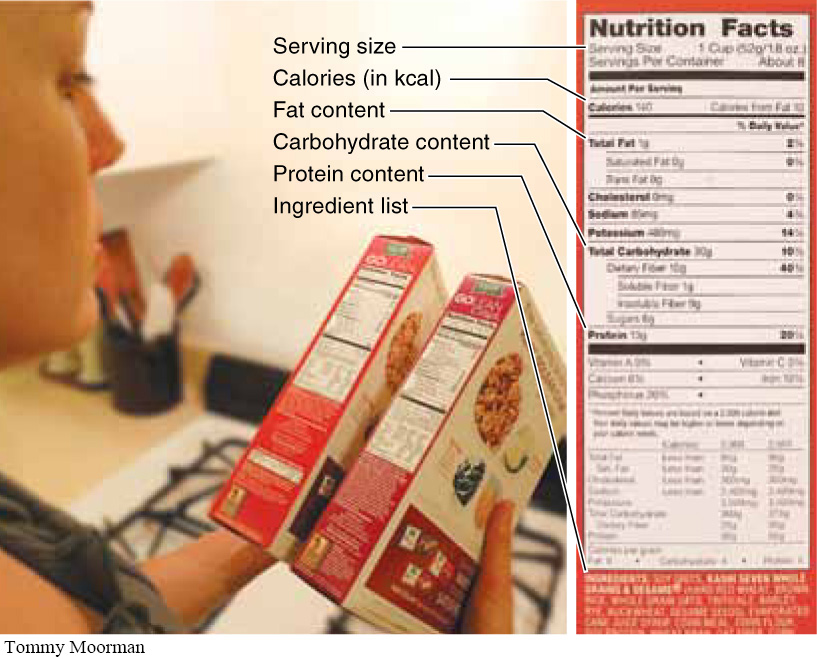22.14–22.19: What we eat profoundly affects our health.


Choosing a healthy diet can be very difficult. There are more than 50,000 different foods we can choose from, and we must also consider how much of each to consume each day. Fortunately, there is not a single “best” diet, so it’s possible to work within any person’s particular likes and dislikes.
At the most basic level, just two requirements—
Balance in a diet is important, because no one food is completely adequate. Milk, for example, is a very good source of protein and calcium but does not contain sufficient iron for most adults. Meats, on the other hand, are rich in iron (as well as protein) but generally are poor sources of calcium. Every type of food, in fact, while providing some nutritional value, also falls short in some other essential nutrient, whether a protein or a specific vitamin or mineral. For this reason, nutritionists recommend consuming a variety of foods from each of the basic food groups—

899
The U.S. Department of Agriculture (USDA) has established dietary guidelines to help people plan a healthy diet. The USDA updates the guidelines every five years in order to incorporate advances in nutritional science. In addition to urging people to take steps to ensure that their food is safe to eat, the USDA also recommends the following:

- 1. Keep your weight within the recommended range.
- 2. Be physically active.
- 3. Choose a variety of fruits, vegetables, grains—
particularly whole grains— and nonfat or low- fat milk and milk products. - 4. Keep your diet low in saturated fat, cholesterol, and total fat.
- 5. Keep your diet low in sugars relative to complex carbohydrates and fiber.
- 6. Keep your diet low in sodium.
- 7. If you consume alcoholic beverages, do so in moderation.
Food labels are an often overlooked tool that can help in adhering to these guidelines and selecting a balanced diet (FIGURE 22-29). Ingredient lists, too, are very valuable, listing every ingredient in order of amount (by weight). Ultimately, following these guidelines can help reduce the incidence and severity of chronic diseases such as stroke and other manifestations of cardiovascular disease, diabetes, and cancer.
Complicating the USDA’s dietary guidelines is the fact that we need to reduce our caloric intake as we get older.
900
Metabolic rate falls slowly but surely, beginning around age 30. Consequently, without an increase in activity, eating the same amount of food—
Q
Question 22.14
Why is it increasingly difficult to maintain a healthy weight as we get older?
It is important to note that people who do not consume meat, poultry, fish, and/or milk products can still have a balanced diet. Legumes, seeds, and nuts can provide many of the same nutrients found in meat, including protein.
Dark leafy vegetables can provide iron, another nutrient plentiful in meat. And in fact, because such diets tend to be lower in fat content, they can be valuable in helping to maintain a healthy body weight.
TAKE-HOME MESSAGE 22.14
A balanced diet contains adequate amounts of essential nutrients and energy, but not surplus amounts, and is low in substances—
Nutritionists recommend consuming a variety of foods from each of the five basic food groups. What are these food groups?